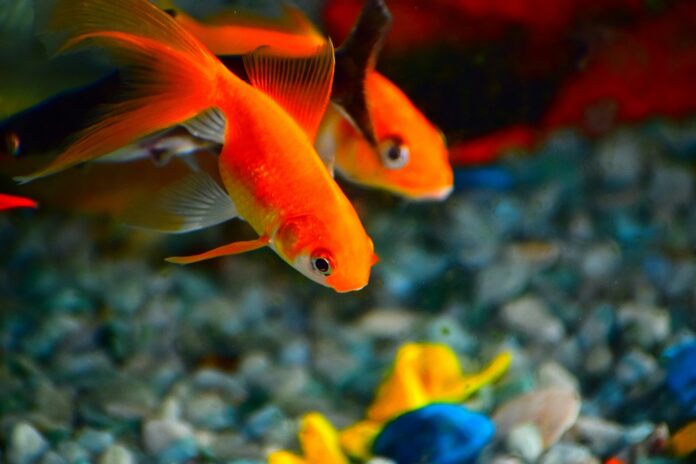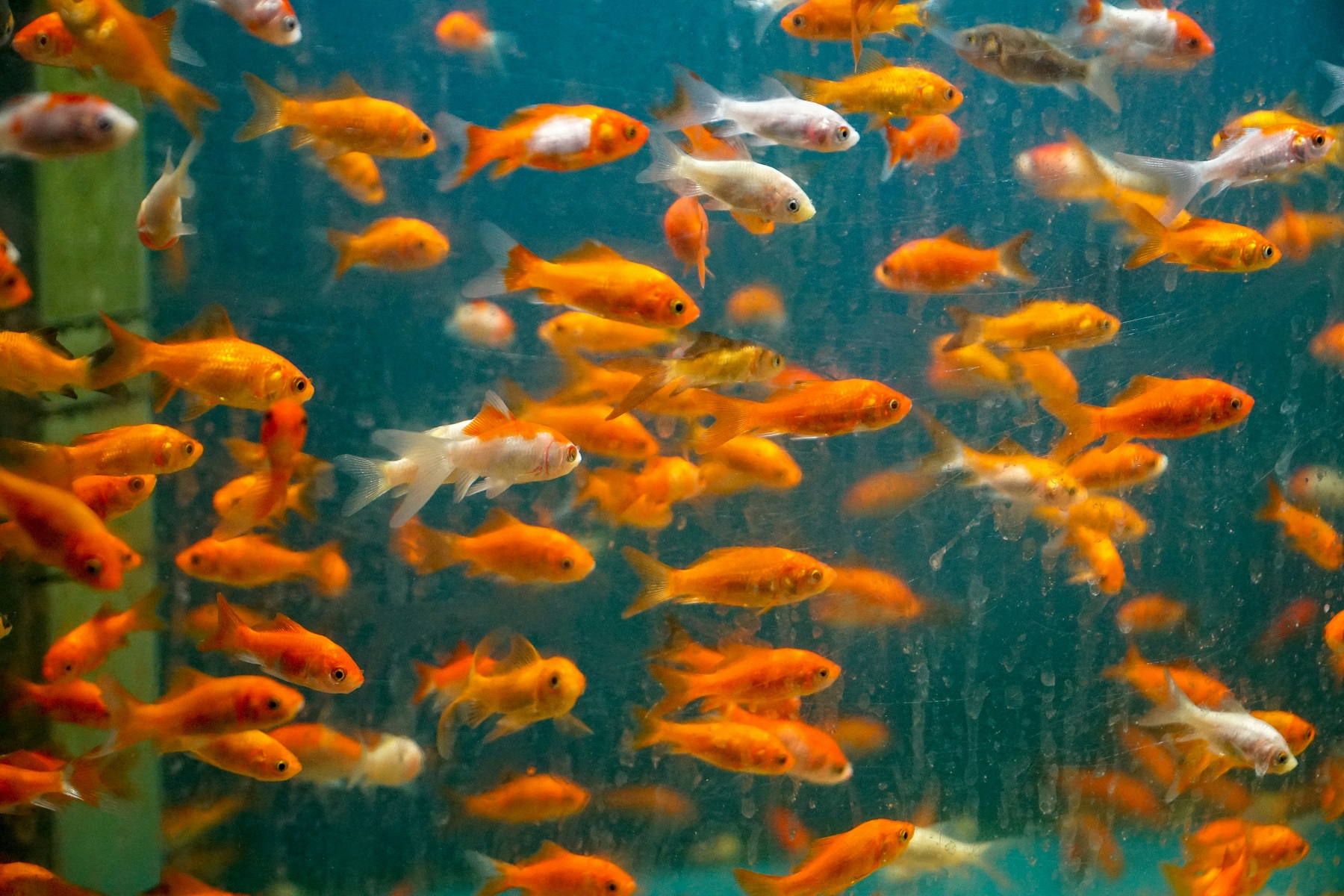Summary: Goldfish are one of the most popular and beginner-friendly pet fish species in the world, known for their vibrant colors and peaceful nature. Originating from East Asia, goldfish come in a wide variety of types, including Common, Comet, Fantail, Oranda, and Ryukin. Proper care involves maintaining a clean, adequately sized tank, providing a balanced diet, and ensuring stable water conditions. Goldfish can live for over a decade with good care and grow much larger than commonly expected. This guide covers essential goldfish care tips, popular types, feeding practices, tank setup, and health management.
Goldfish (Carassius auratus) are one of the most recognizable and beloved freshwater fish species in the world. They have been kept as ornamental pets for centuries and are often the first fish that come to mind when people think of home aquariums. Despite their reputation as simple “starter pets,” require proper care, space, and attention to thrive. This comprehensive guide will explore the fascinating history of this species, the wide range of varieties available, their habitat and dietary needs, health concerns, breeding practices, and tips for long-term success.
History of the Goldfish
The goldfish has a deep-rooted history that traces back over a thousand years. Native to East Asia, the first goldfish were derived from wild carp species in China. During the Tang Dynasty (around 618–907 AD), it was discovered that certain mutations in carp resulted in golden or orange coloring. These rare individuals were selectively bred, and by the Song Dynasty (960–1279 AD), goldfish had become widely popular in Chinese ornamental ponds.
Eventually, the practice of goldfish breeding spread to Japan, then to Europe in the 1600s, and finally to North America in the 1800s. With centuries of selective breeding, today’s goldfish come in a wide variety of shapes, colors, and sizes — a far cry from their modest wild origins.
Types of Goldfish
One of the most appealing aspects of goldfish is their variety. From sleek, agile swimmers to round-bodied, ornamental beauties, they come in two primary categories: single-tailed and fancy (double-tailed).
Single-Tailed Goldfish
These are closer to the original body shape of the wild carp and are often more active and resilient. They require more swimming space and are ideal for outdoor ponds or large tanks.
Common Goldfish: Characterized by their simple, streamlined bodies and bright orange coloring, they are hardy and can grow quite large, up to 12 inches or more.
Comet Goldfish: A popular variety in the U.S., comets have longer, flowing tails and a more slender build. They are fast swimmers and do well in ponds.
Shubunkin: Known for their calico coloration (a mix of orange, black, white, and blue), shubunkins are particularly striking. They are similar in build to comets and enjoy similar care conditions.
Fancy Goldfish
These are bred for aesthetic appeal and are generally slower-moving. Fancy goldfish typically do better in indoor aquariums due to their delicate features.
Fantail: With a double tail and egg-shaped body, the fantail is one of the most beginner-friendly fancy types.
Oranda: Famous for the fleshy growth (wen) on its head, the oranda is elegant but requires extra care due to its sensitivity.
Ryukin: Known for a pronounced hump behind the head and long flowing fins, Ryukins are active and decorative.
Telescope Eye: Their protruding eyes make them unique and more vulnerable to injury and poor water conditions.
Ranchu and Lionhead: These goldfish have no dorsal fin and exhibit prominent head growth. They are slow swimmers and best kept with similar types to avoid competition for food.
Goldfish Habitat
The notion that they can live healthily in a bowl is a widespread myth. They require a spacious, filtered aquarium or pond to thrive.
Tank Size and Environment
A single goldfish needs at least 20 gallons of water, with an additional 10 gallons for each extra fish. Fancy varieties require even more space due to their size and waste output. The tank should be long rather than tall, providing horizontal swimming room. A pond is also an excellent option for single-tailed goldfish, as they enjoy active swimming and can grow much larger in open water.
Water Parameters
they are coldwater fish, but they still need stable water conditions. Ideal parameters include:
Temperature: 65–75°F (18–24°C)
pH Level: Neutral to slightly alkaline (6.5–7.5)
Ammonia/Nitrite: 0 ppm
Nitrate: Under 40 ppm
Use a quality water test kit weekly to monitor these levels. Regular partial water changes (about 25–50% per week) are essential to keep the environment safe and healthy.
Filtration and Aeration
Goldfish produce a significant amount of waste, so a powerful filtration system is necessary. Choose a filter rated for a tank at least 1.5 to 2 times larger than yours. Additional,ly aeration via air stones or sponge filters helps maintain high oxygen levels.
Substrate and Decorations
Use smooth gravel or sand as the substrate to prevent injury. Avoid sharp decorations. Live plants like Java fern, Anubias, and Hornwort can provide hiding spots and enrich the environment. they tend to nibble on plants, so choose hardy species or consider floating plants like duckweed.
Feeding Your Goldfish the Right Way
Goldfish are omnivorous and benefit from a varied, balanced diet. A high-quality goldfish pellet or flake should form the base of their diet, but supplementing with fresh vegetables and occasional protein boosts their health and coloration.
Dietary Options
Staple foods: Goldfish-specific pellets or flakes that sink slowly to minimize gulping air.
Vegetables: Blanched peas (shelled), spinach, lettuce, and zucchini slices are excellent choices.
Protein: Occasional treats like brine shrimp, daphnia, or bloodworms provide protein, especially beneficial during growth or breeding seasons.
Feeding Tips
Feed your goldfish small portions 2–3 times a day, only as much as they can consume in two minutes. Overfeeding can lead to swim bladder issues and water pollution. Fast your fish one day a week to promote healthy digestion.
Common Diseases
Even with great care, they can sometimes fall ill. Many health problems are preventable with proper tank maintenance and early detection.
Common Ailments
Ich (White Spot Disease): Presents as small white dots and causes scratching behavior. Treat with elevated temperature and aquarium salt or anti-parasitic medication.
Swim Bladder Disease: Causes buoyancy issues. Often linked to poor diet or overfeeding. Fasting and feeding peas can help.
Fin Rot: Bacterial infection that frays fins. Improve water quality and treat with antibacterial remedies.
Fungal Infections: Appear as cotton-like patches. Isolate the fish and use antifungal treatments.
Dropsy: Swelling and raised scales due to internal infections. Difficult to treat, but early antibiotic intervention may help.
Quarantine new fish for at least two weeks before adding them to your main tank to prevent disease introduction.
Goldfish Breeding A Fascinating Process
Goldfish are egg-layers and can be bred in home aquariums or ponds. However, successful breeding requires preparation and close monitoring.
Preparing for Breeding
Start by conditioning males and females with a high-protein diet and gradually raising the water temperature. Males will develop white breeding tubercles on their gill plates and fins, and females will appear rounder when full of eggs.
Spawning and Fry Care
Goldfish typically spawn in the morning. Males chase the female, encouraging her to lay eggs, which they then fertilize externally. Provide spawning mops or fine-leaved plants to catch eggs. After spawning, remove the adults to prevent them from eating the eggs. Eggs hatch in 4 to 7 days, depending on temperature.
Feed newly hatched fry with infusoria, then transition to baby brine shrimp and crushed flakes as they grow. Maintain pristine water conditions for rapid and healthy development.
Long-Term Care Tips
Tank Maintenance: Clean the tank and filter regularly, and perform weekly water changes.
Observe Behavior: Watch for signs of stress, sluggishness, or changes in appearance.
Avoid Overstocking: Too many fish in a tank leads to water quality problems and stunted growth.
Proper Companions: Keep goldfish with other peaceful, similarly sized goldfish. Avoid aggressive or tropical species.
Frequently Asked Questions
What are the most common types of goldfish?
Common types of goldfish include Comet, Fantail, Oranda, Ryukin, and Common Goldfish, each with unique shapes and features.
How long do goldfish live?
With proper care, goldfish can live 10 to 15 years or longer, especially in larger tanks or outdoor ponds.
Do goldfish need a filter?
Yes, goldfish produce a lot of waste, so a good filtration system is essential for maintaining clean and healthy water.
How big can goldfish get?
Goldfish can grow up to 6–12 inches or more, depending on the variety and tank or pond size.
What should I feed my goldfish?
Goldfish should be fed a balanced diet of high-quality pellets, flakes, and occasional treats like vegetables and live or frozen foods.
Can goldfish live in a bowl?
While commonly seen in bowls, this is not ideal. Goldfish need a properly filtered tank of at least 20 gallons for one fish.
Do goldfish need a heater?
Most goldfish varieties are cold-water fish and do not need a heater, but stable room temperature is important.
How often should I clean a goldfish tank?
Partial water changes (20–30%) should be done weekly to keep the tank clean and ammonia levels low.
Can goldfish live with other fish?
Goldfish can live with other peaceful, cold-water fish, but avoid mixing them with tropical or aggressive species.
Why is my goldfish turning white or black?
Color changes in goldfish may result from genetics, water quality, stress, or illness and should be monitored closely.


